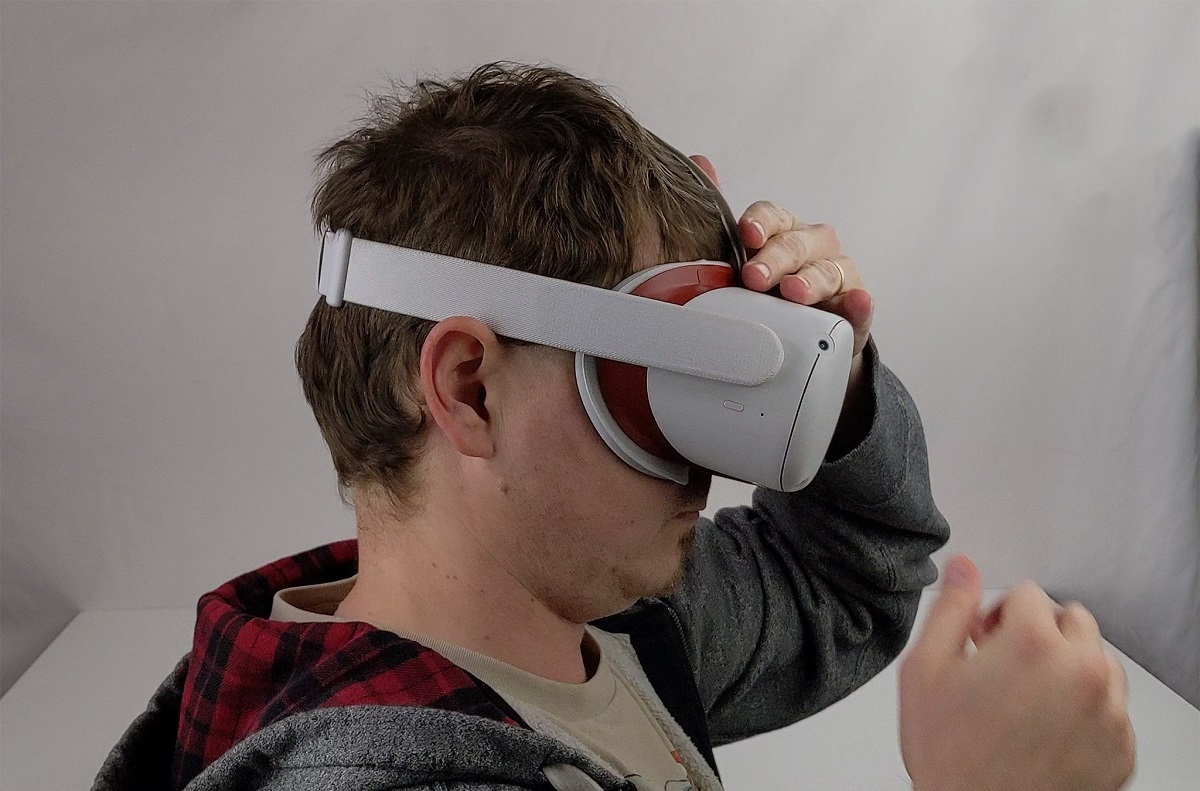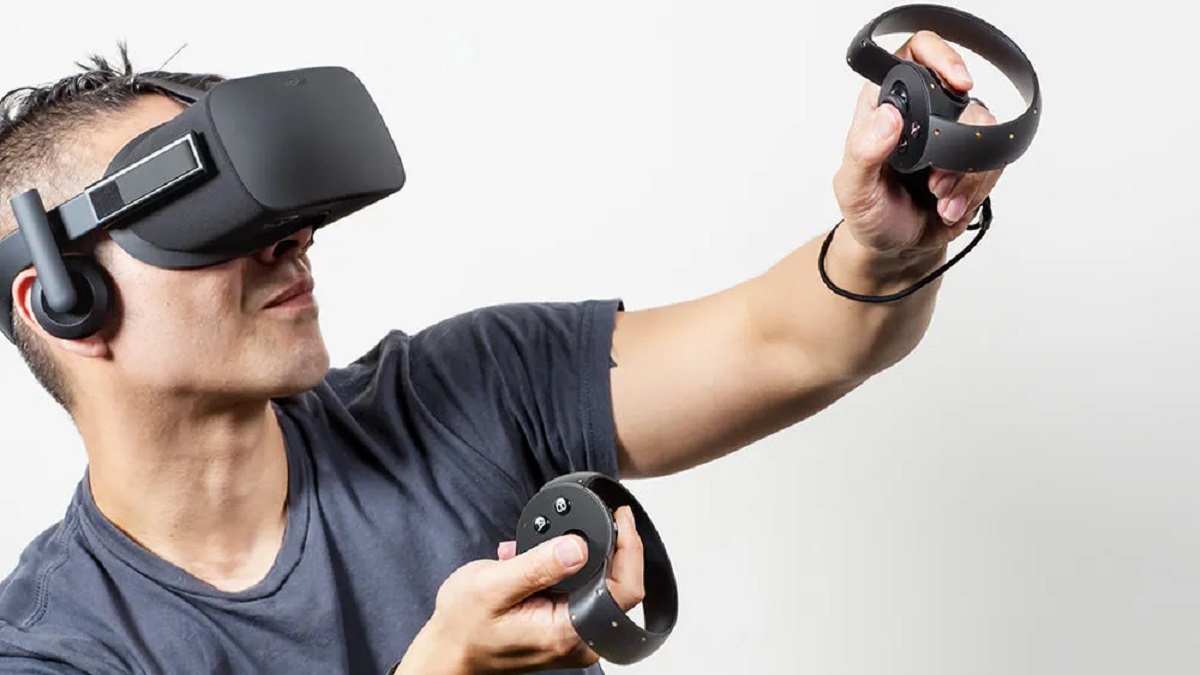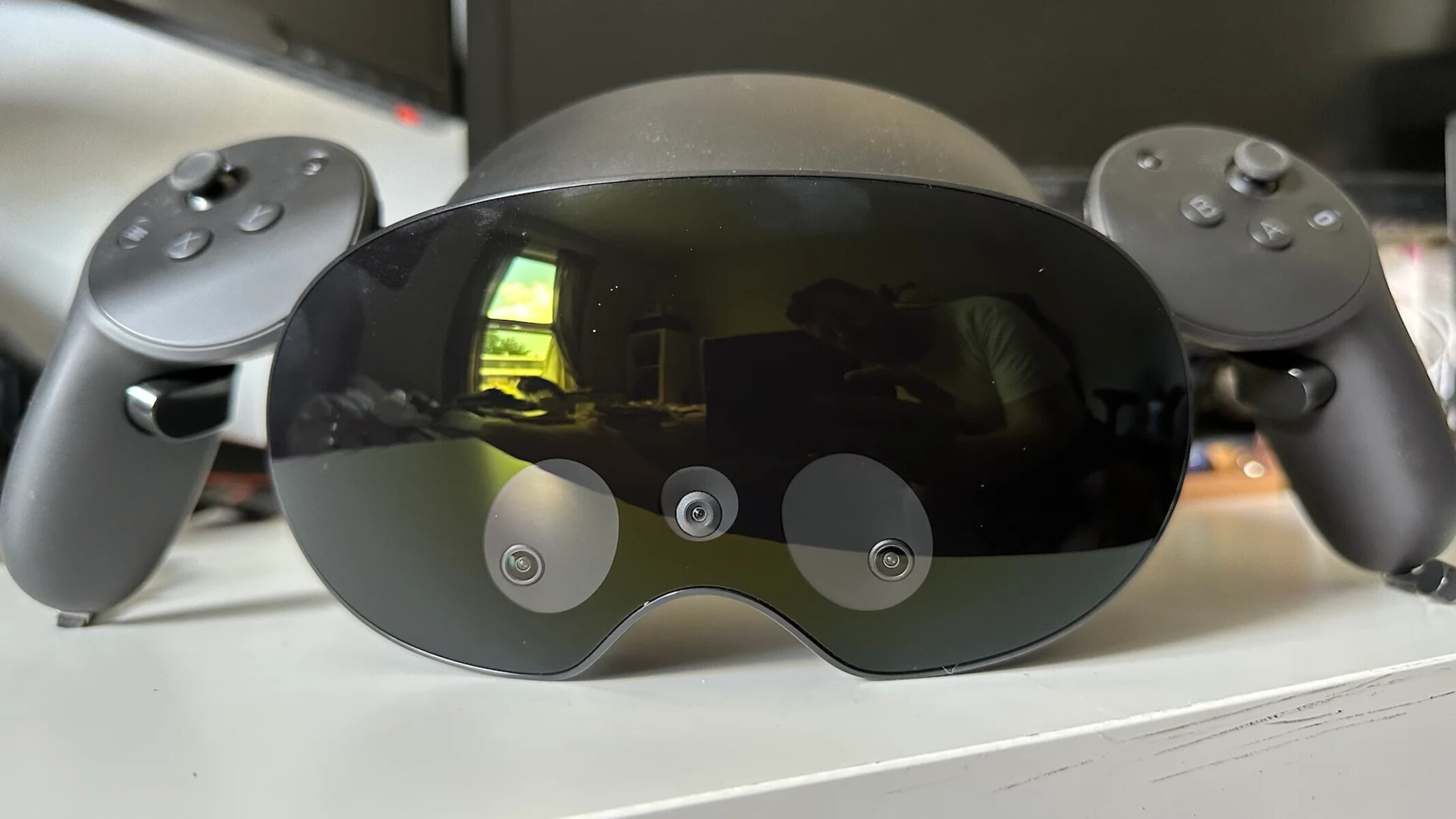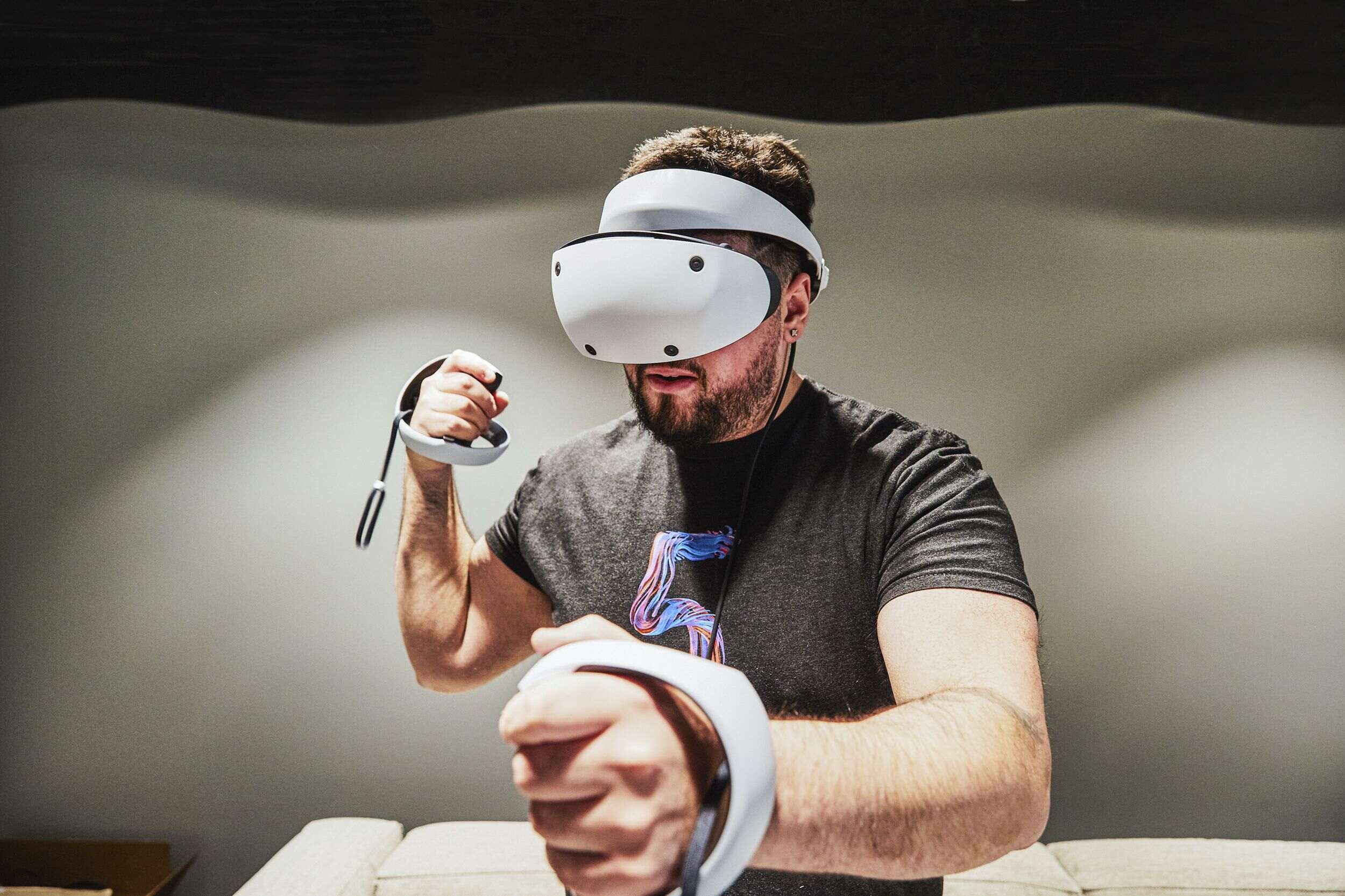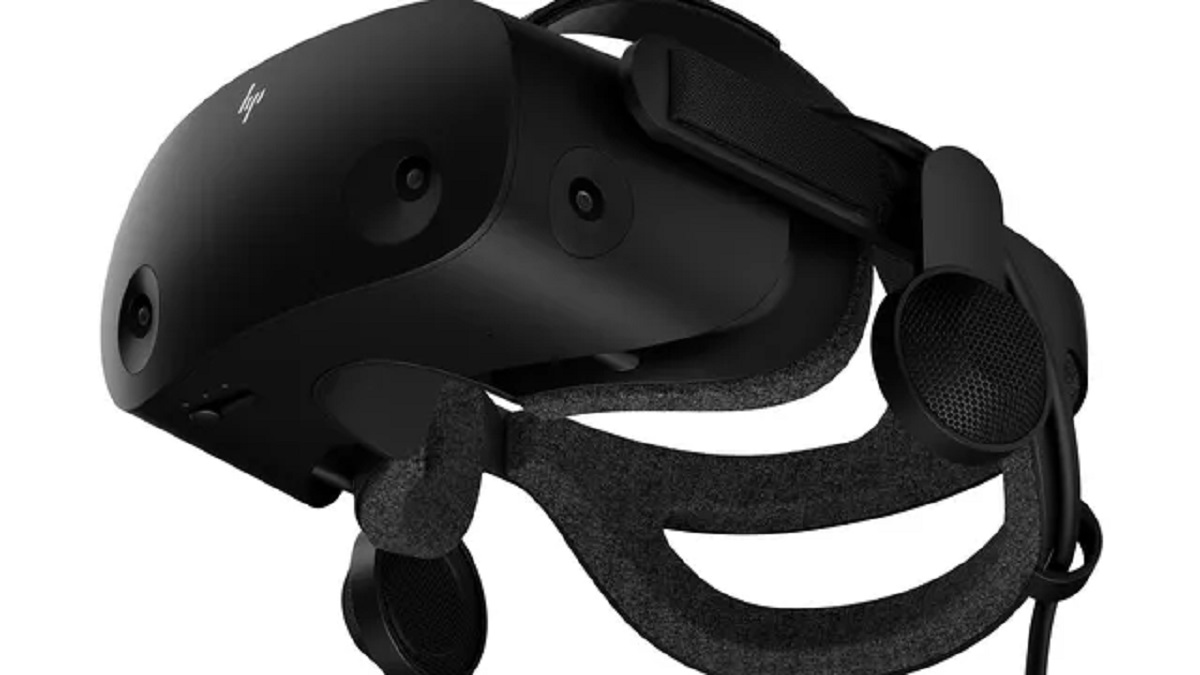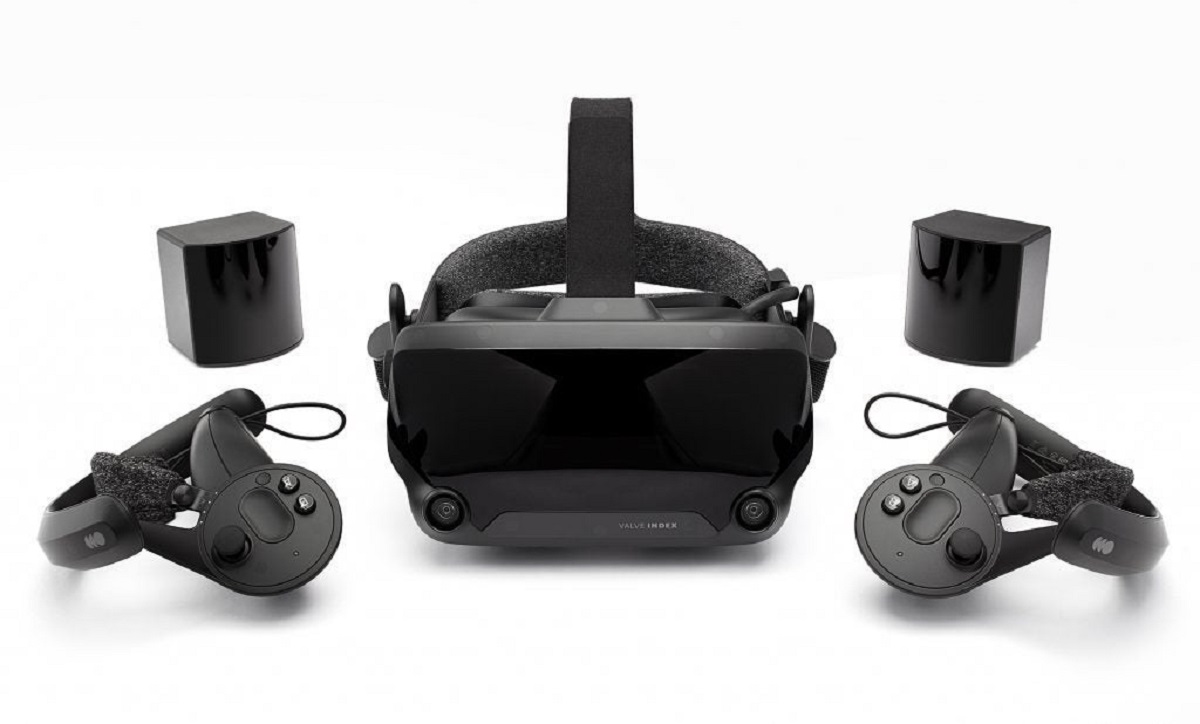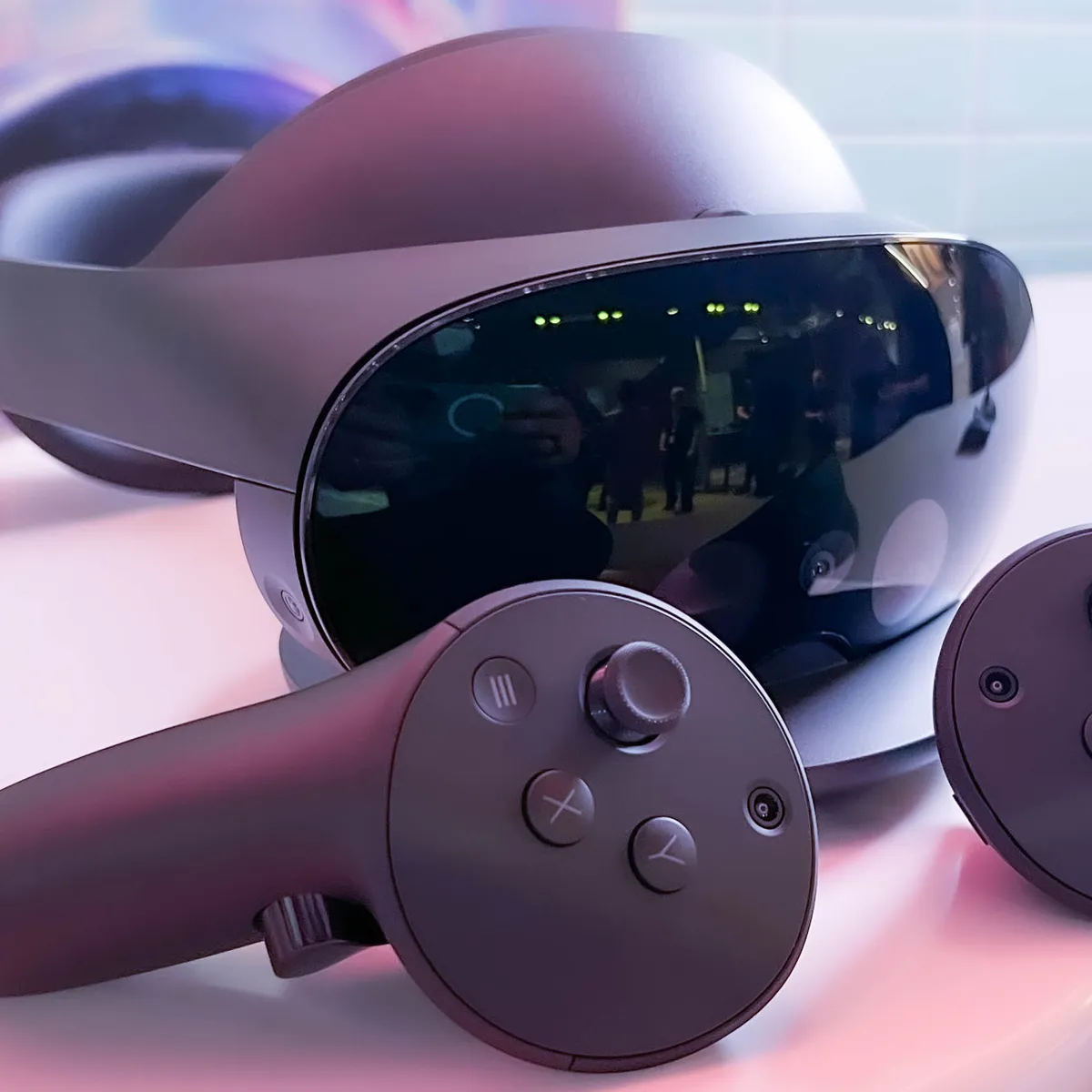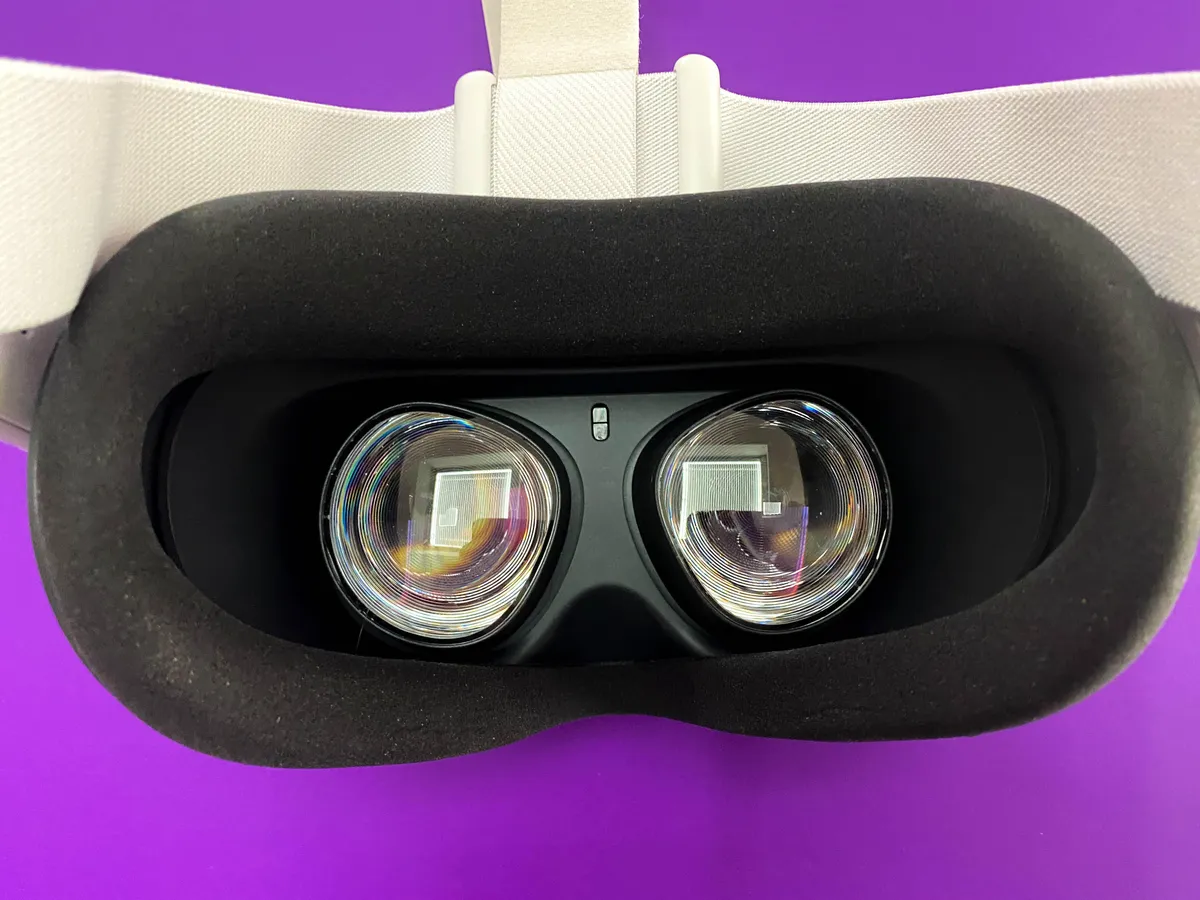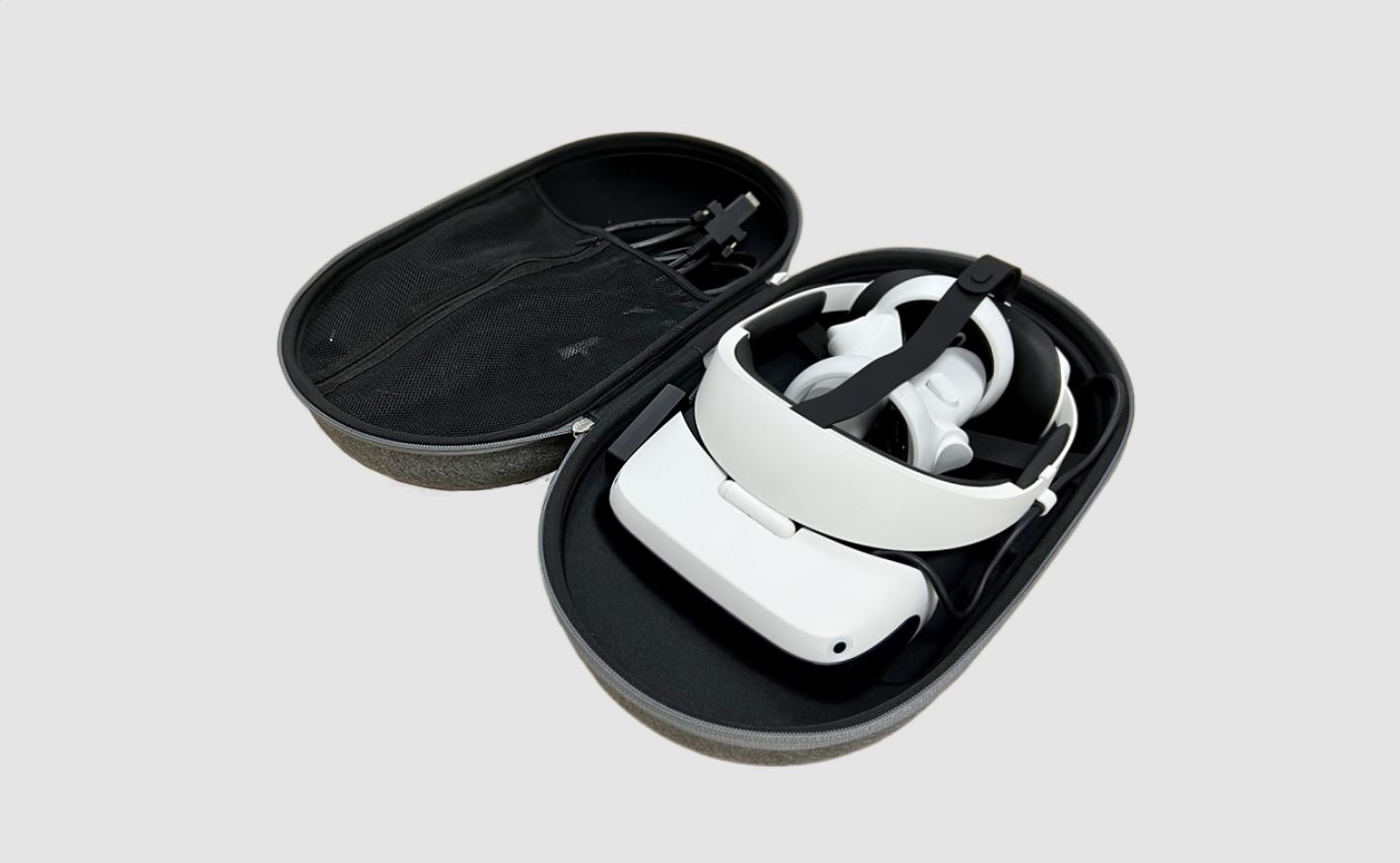Introduction
The Oculus Quest 2 is a remarkable piece of technology that has revolutionized the way we experience virtual reality. Its immersive capabilities and versatility have made it a favorite among VR enthusiasts, gamers, and tech-savvy individuals. However, to truly enjoy all that the Oculus Quest 2 has to offer, it's crucial to ensure that the headset fits comfortably and securely on your head. Achieving the perfect fit not only enhances the overall VR experience but also minimizes discomfort during extended use.
In this comprehensive guide, we will delve into the various aspects of adjusting the Oculus Quest 2 for optimal comfort. From adjusting the head strap and interpupillary distance (IPD) to using the glasses spacer and customizing the facial interface, we will explore the key elements that contribute to a comfortable and personalized fit. Whether you're a seasoned VR user or a newcomer to the world of virtual reality, mastering the art of adjusting the Oculus Quest 2 headset will elevate your immersive experiences to new heights.
Join us as we embark on a journey to unlock the full potential of your Oculus Quest 2 by fine-tuning its fit to suit your unique preferences and physical attributes. Let's dive into the intricacies of achieving the perfect fit for your Oculus Quest 2, ensuring that every virtual adventure is not only captivating but also remarkably comfortable.
Understanding the Oculus Quest 2 Fit
Achieving the ideal fit for your Oculus Quest 2 headset is an essential step in maximizing your virtual reality experience. The comfort and stability of the headset directly impact the immersion and enjoyment derived from VR content. Understanding the nuances of the Oculus Quest 2 fit involves considering several key factors that contribute to a personalized and comfortable experience.
First and foremost, the distribution of weight plays a crucial role in ensuring long-term comfort during extended VR sessions. The Oculus Quest 2 is designed to evenly distribute its weight across the user's head, minimizing pressure points and discomfort. This balanced weight distribution is achieved through the adjustable head strap and the innovative design of the headset, allowing users to customize the fit to their specific head size and shape.
Furthermore, the interpupillary distance (IPD) is a fundamental aspect of the Oculus Quest 2 fit. The IPD refers to the distance between the user's pupils and is pivotal in aligning the virtual images with the user's eyes. By adjusting the IPD settings, users can optimize the clarity and visual comfort of the VR experience, ensuring that the virtual world appears sharp and well-defined.
Additionally, accommodating users who wear glasses is a crucial consideration in the Oculus Quest 2 fit. The inclusion of a glasses spacer allows individuals with prescription eyewear to comfortably wear the headset without compromising visual quality or comfort. This thoughtful design element ensures that the Oculus Quest 2 caters to a diverse range of users, regardless of their visual requirements.
Understanding the Oculus Quest 2 fit also involves recognizing the significance of the facial interface. This component not only contributes to the overall comfort of the headset but also plays a role in maintaining hygiene and cleanliness. The removable and interchangeable facial interfaces enable users to customize the fit and feel of the headset while also facilitating easy cleaning and maintenance.
In essence, achieving the perfect fit for the Oculus Quest 2 entails a holistic understanding of its design elements and the ways in which they can be tailored to suit individual preferences. By considering weight distribution, interpupillary distance, glasses compatibility, and facial interface customization, users can unlock the full potential of their Oculus Quest 2, ensuring that every VR experience is characterized by comfort, immersion, and personalized fit.
Adjusting the Head Strap
The head strap of the Oculus Quest 2 serves as a pivotal component in achieving a comfortable and secure fit. Its adjustable nature allows users to customize the tension and positioning to suit their individual head size and shape. Proper adjustment of the head strap not only ensures stability during VR experiences but also plays a significant role in distributing the weight of the headset evenly, minimizing strain on the neck and head.
To begin the process of adjusting the head strap, it's essential to place the headset securely on the head, with the rear cushion positioned at the base of the skull. The side straps should be adjusted to sit comfortably above the ears, ensuring that the weight of the headset is evenly distributed across the crown of the head. Once the initial positioning is achieved, the dial at the rear of the head strap can be rotated to tighten or loosen the fit, providing a customized level of tension that feels secure without causing discomfort.
Finding the optimal tension for the head strap is a subjective process that varies from user to user. Experimenting with different levels of tightness allows individuals to identify the sweet spot that offers stability without exerting excessive pressure on the head. It's important to ensure that the headset remains securely in place during head movements, such as looking up, down, or turning from side to side, without feeling overly tight or causing discomfort.
Furthermore, the position of the head strap plays a crucial role in achieving a balanced and comfortable fit. Adjusting the angle of the side straps and the height of the rear cushion ensures that the weight of the headset is evenly distributed, minimizing pressure points and enhancing overall comfort. By fine-tuning the positioning of the head strap, users can customize the fit to accommodate their unique head shapes and sizes, allowing for extended VR sessions without experiencing discomfort or fatigue.
In summary, adjusting the head strap of the Oculus Quest 2 is a fundamental step in tailoring the headset to individual comfort preferences. By finding the optimal tension, positioning, and angle, users can ensure a secure and comfortable fit that enhances the overall VR experience. The adjustable head strap serves as a key element in achieving long-term comfort and stability, enabling users to immerse themselves in virtual worlds with confidence and ease.
Adjusting the Interpupillary Distance (IPD)
The interpupillary distance (IPD) holds a pivotal role in the visual comfort and clarity of the Oculus Quest 2 experience. This crucial setting refers to the distance between the user's pupils and directly influences the alignment of the virtual images with the eyes. By adjusting the IPD settings, users can optimize the clarity and visual comfort of the VR experience, ensuring that the virtual world appears sharp and well-defined.
To begin the process of adjusting the IPD, users can access the IPD adjustment slider located beneath the front of the headset. By gently sliding the IPD adjustment mechanism, users can align the lenses with their specific interpupillary distance, ensuring that the virtual images are presented in a manner that is visually comfortable and well-suited to their unique physiology.
It's essential to note that the IPD settings are not only crucial for visual comfort but also play a significant role in minimizing eye strain and fatigue during extended VR sessions. By aligning the lenses with the user's specific interpupillary distance, the Oculus Quest 2 ensures that the virtual world is presented in a manner that is visually harmonious and well-suited to the individual's physiological characteristics.
Furthermore, the IPD adjustment is particularly beneficial for users who may experience visual discomfort or distortion while using the default settings. By customizing the IPD to match their specific interpupillary distance, individuals can enjoy a clear, well-defined visual experience that minimizes the risk of eye strain or visual fatigue.
In essence, adjusting the interpupillary distance (IPD) on the Oculus Quest 2 is a fundamental step in tailoring the visual experience to individual comfort and clarity preferences. By customizing the IPD settings to align with the user's specific interpupillary distance, the headset ensures that the virtual world is presented in a visually optimized manner, enhancing overall comfort and clarity. The IPD adjustment feature stands as a testament to the Oculus Quest 2's commitment to providing a personalized and visually comfortable VR experience for users of diverse physiological characteristics.
Using the Glasses Spacer
Wearing glasses has long been a potential obstacle for individuals seeking to fully immerse themselves in virtual reality experiences. The Oculus Quest 2, however, addresses this concern through the inclusion of a glasses spacer, a thoughtful and practical solution that caters to users with prescription eyewear. The glasses spacer serves as a testament to the headset's commitment to inclusivity, ensuring that individuals with glasses can comfortably enjoy the immersive world of virtual reality without compromising visual quality or comfort.
The glasses spacer is a small yet significant accessory that attaches to the Oculus Quest 2 headset, creating additional space between the user's glasses and the lenses of the headset. This ingenious design element eliminates the discomfort and inconvenience often associated with wearing glasses while using VR headsets, allowing individuals to fully appreciate the captivating virtual experiences without any visual hindrances.
To use the glasses spacer, users can simply attach it to the interior of the Oculus Quest 2 headset, ensuring a secure and stable fit. Once in place, the spacer creates ample room for the user's glasses, preventing them from pressing against the lenses and causing discomfort. This not only ensures a comfortable fit for individuals wearing glasses but also maintains the visual integrity of the VR experience, guaranteeing that the virtual world is presented with exceptional clarity and precision.
The inclusion of the glasses spacer underscores the Oculus Quest 2's dedication to accommodating a diverse range of users, regardless of their visual requirements. By prioritizing inclusivity and user comfort, the headset empowers individuals with glasses to seamlessly integrate into the immersive realm of virtual reality, enhancing their overall experience without any compromise.
In essence, the glasses spacer serves as a testament to the Oculus Quest 2's commitment to providing a comfortable and inclusive VR experience for all users. By addressing the specific needs of individuals who wear glasses, the headset ensures that everyone can fully enjoy the captivating virtual worlds it has to offer, fostering a sense of inclusivity and accessibility that enriches the overall VR experience for users of diverse visual backgrounds.
Adjusting the Facial Interface
The facial interface of the Oculus Quest 2 plays a pivotal role in ensuring comfort, hygiene, and a personalized fit for users. This component, which comes into direct contact with the user's face, is designed to be easily adjustable and interchangeable, allowing individuals to customize the fit and feel of the headset to suit their preferences and physical attributes.
To begin the process of adjusting the facial interface, users can gently remove the existing interface by applying pressure to the designated release tabs, located on either side of the headset. This simple yet effective mechanism enables the seamless removal of the facial interface, providing access to the underlying structure of the headset.
Once the facial interface is removed, users can explore the range of interchangeable interfaces available for the Oculus Quest 2. These interfaces come in various sizes and materials, catering to different facial contours and preferences. By selecting the interface that best suits their facial structure and comfort preferences, users can ensure a snug and personalized fit that minimizes pressure points and maximizes comfort during extended VR sessions.
Furthermore, the ability to adjust the facial interface facilitates easy cleaning and maintenance, contributing to hygiene and overall cleanliness. The removable nature of the interface allows users to wash it with mild soap and water, ensuring that the component remains free from dirt, oils, and sweat that may accumulate during use. This not only promotes a hygienic VR experience but also prolongs the longevity of the headset's components, ensuring that it remains in optimal condition for long-term use.
In addition to the practical benefits, such as hygiene and maintenance, the customizable nature of the facial interface underscores the Oculus Quest 2's commitment to providing a personalized and comfortable VR experience for users of diverse facial characteristics. By offering a range of interchangeable interfaces and prioritizing user comfort and hygiene, the headset empowers individuals to tailor the fit of the headset to their unique facial contours, ensuring that every VR experience is characterized by exceptional comfort and a personalized touch.
In essence, adjusting the facial interface of the Oculus Quest 2 is a fundamental step in tailoring the headset to individual comfort preferences and hygiene needs. By providing a range of interchangeable interfaces and facilitating easy cleaning and maintenance, the headset ensures that users can enjoy a personalized, comfortable, and hygienic VR experience that caters to their unique facial characteristics and comfort preferences.
Conclusion
In conclusion, achieving the perfect fit for the Oculus Quest 2 is not merely a matter of comfort; it is an essential element that directly impacts the overall virtual reality experience. By understanding and mastering the various adjustments and customization options available, users can elevate their VR encounters to new heights of comfort, immersion, and visual clarity.
The Oculus Quest 2's commitment to providing a personalized and inclusive VR experience is evident in its thoughtful design elements, such as the adjustable head strap, interpupillary distance (IPD) settings, glasses spacer, and interchangeable facial interfaces. These features collectively empower users to tailor the headset to their unique physical attributes and comfort preferences, ensuring that every virtual adventure is characterized by exceptional comfort and visual precision.
The adjustable head strap, with its customizable tension and positioning, serves as the foundation for a secure and comfortable fit, while the IPD settings optimize visual clarity and minimize eye strain. The inclusion of a glasses spacer eliminates the discomfort often associated with wearing glasses during VR experiences, fostering inclusivity and accessibility for users with diverse visual needs. Additionally, the interchangeable facial interfaces not only contribute to personalized comfort but also promote hygiene and cleanliness, enhancing the overall VR experience.
By fine-tuning the fit of the Oculus Quest 2 to accommodate individual preferences, users can embark on immersive virtual journeys with confidence, knowing that their comfort and visual clarity have been prioritized. Whether delving into captivating virtual worlds, engaging in thrilling gaming experiences, or exploring educational simulations, the tailored fit of the Oculus Quest 2 ensures that users can fully immerse themselves in the virtual realm without distraction or discomfort.
In essence, the art of adjusting the Oculus Quest 2 for optimal comfort is a testament to the headset's dedication to providing a truly personalized and inclusive VR experience. By mastering the adjustments and customization options, users can unlock the full potential of the Oculus Quest 2, ensuring that every virtual encounter is marked by comfort, visual precision, and a sense of inclusivity that transcends physical differences.
In the world of virtual reality, the perfect fit is not just a matter of comfort; it's the gateway to extraordinary experiences that captivate the senses and transport users to realms limited only by imagination. With the Oculus Quest 2, the journey to the perfect fit is a journey to unparalleled comfort, immersion, and inclusivity.







